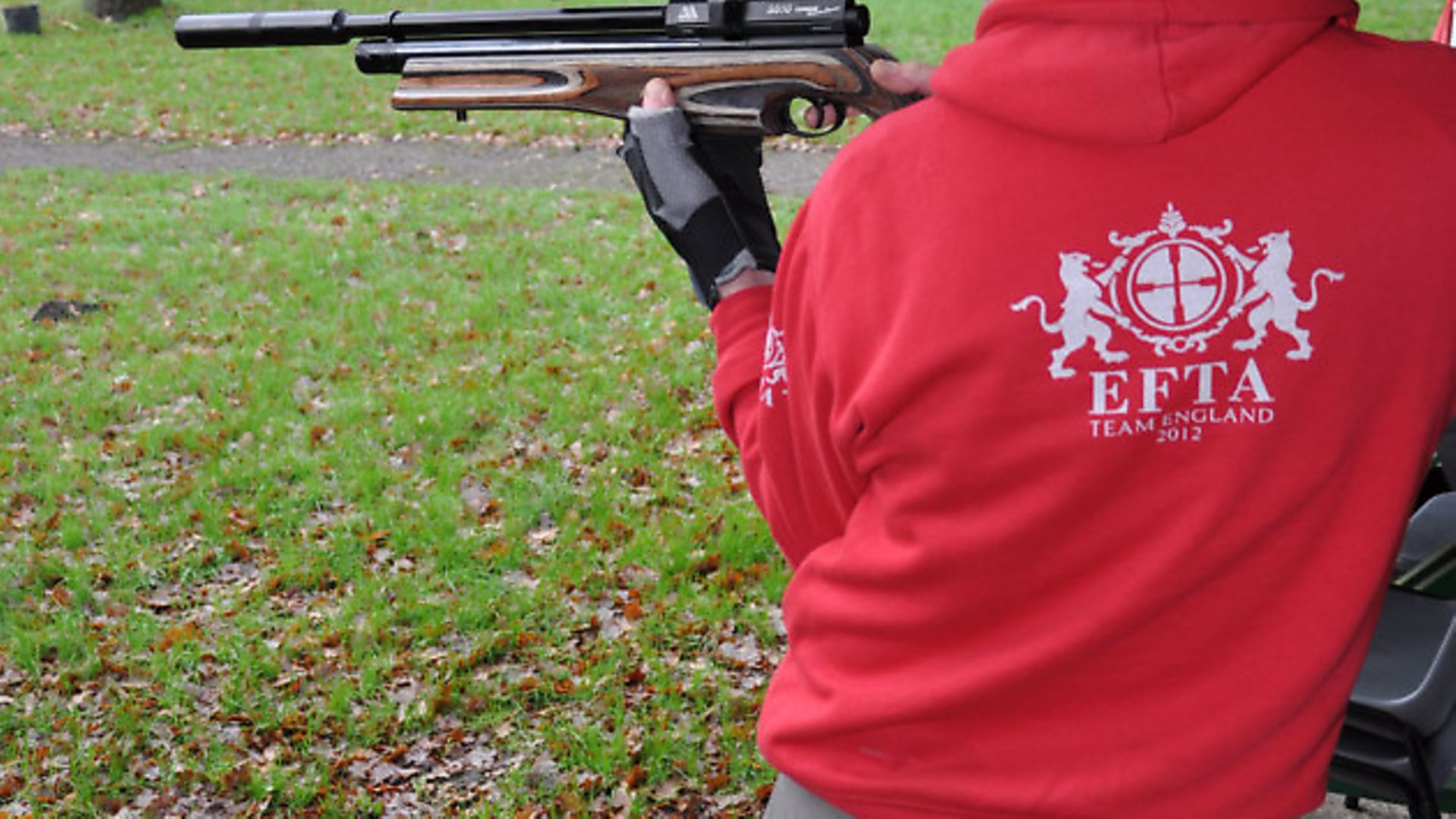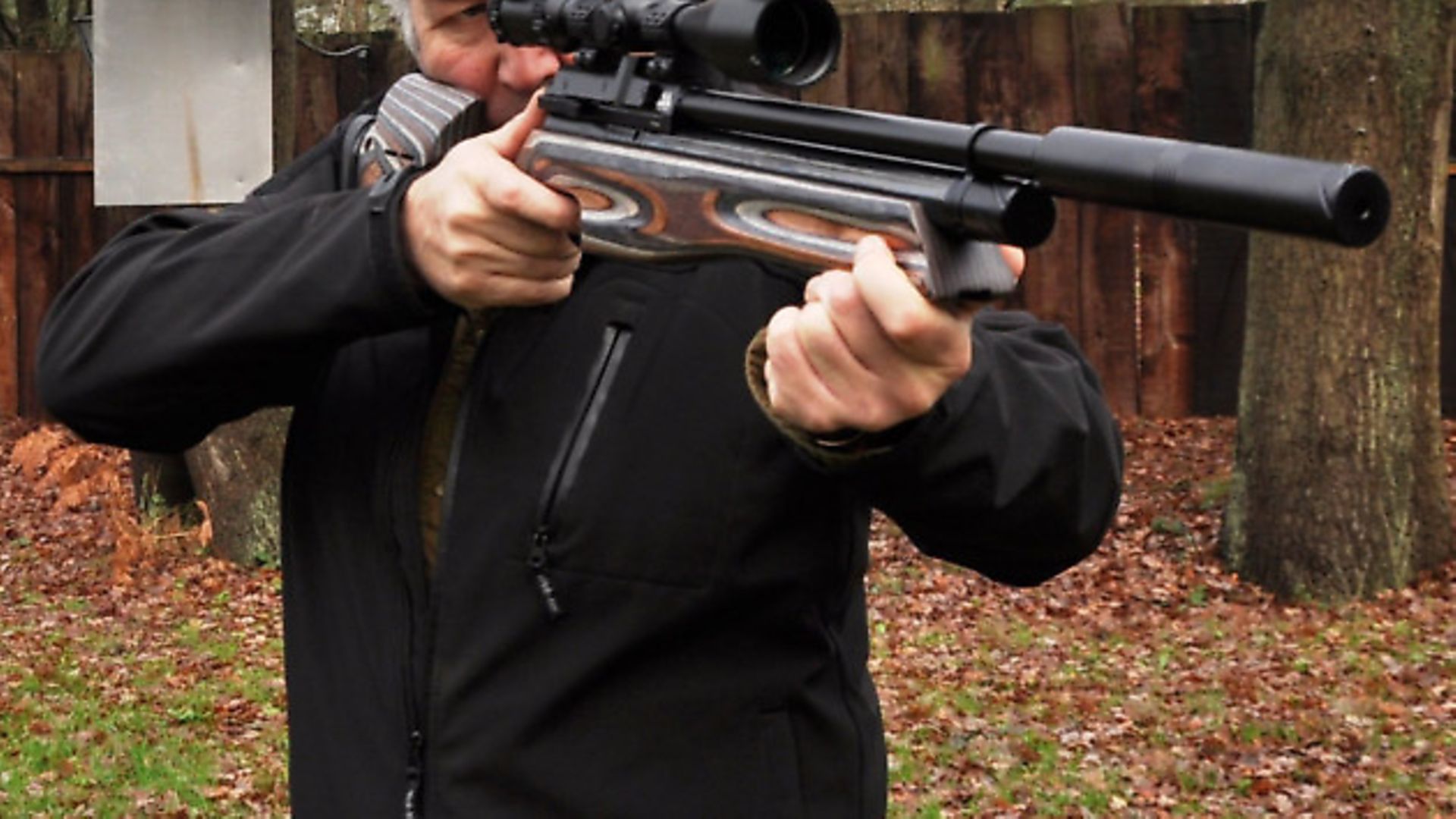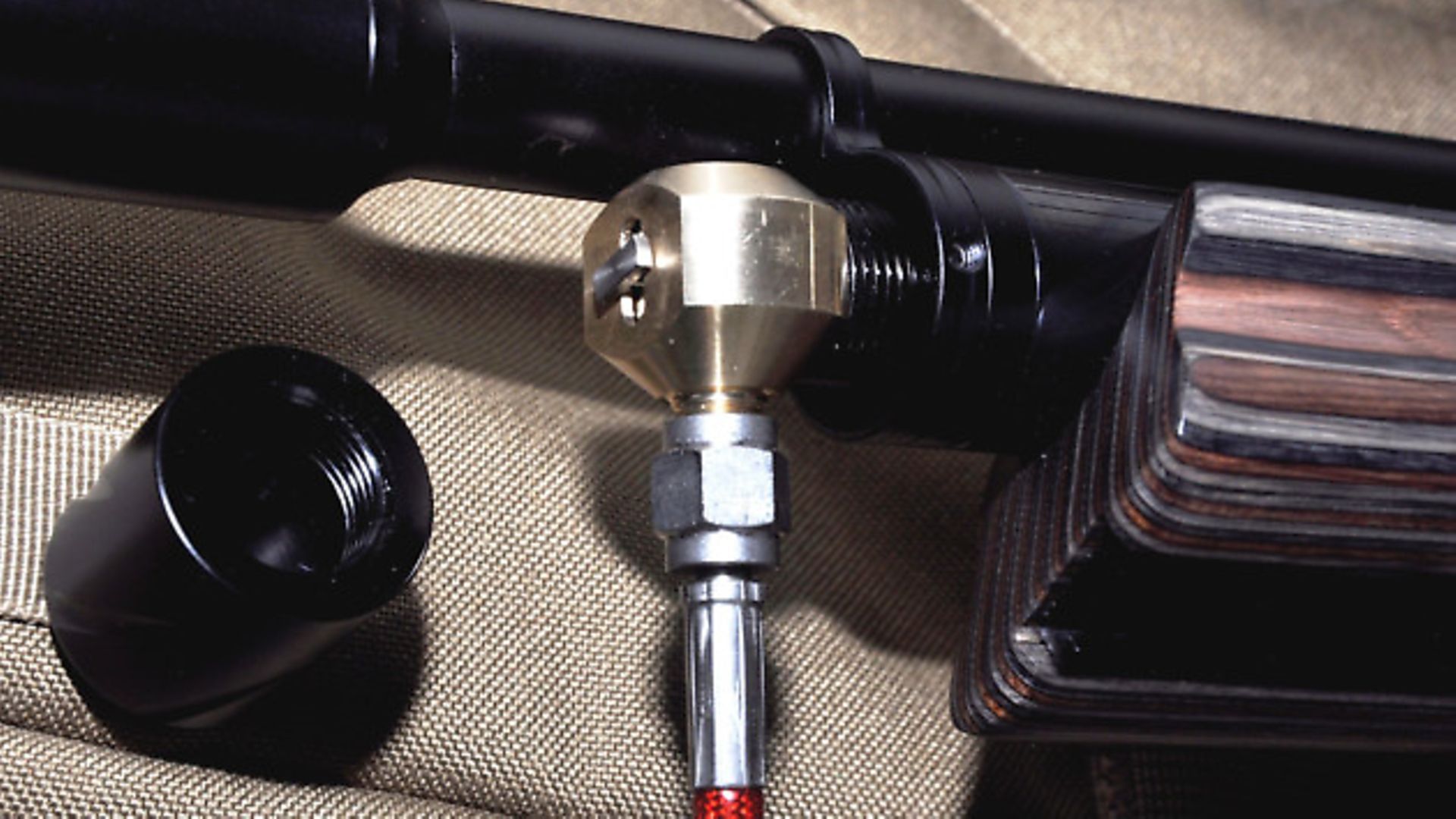The editor gets the first proper go of the Air Arms Ultimate Sporter
 credit: Archant
credit: Archant
Please take a good, long look at this month’s test subject. That shouldn’t be too hard on the eye, because it’s a striking rifle built around extremely interesting lines, and the overall impression is one of modern efficiency. I believe it goes much further than that, though; I believe the Air Arms Ultimate Sporter could represent the future of top grade sporting air rifles, and, in addition to exploring the rifle’s capabilities, this test will be dedicated to proving my belief.
 credit: Archant
credit: Archant
The basis of that belief hangs on previous statements of mine that the future for sporting airgun development lies more with ergonomics than the increased efficiency of the action. I truly believe we’ve reached a point where making our rifles another degree or two more consistent, or even more accurate, will amount to no practical benefit in the hunting field. In short, our rifles are better than we are, and we need to catch up before we push the guns much further ahead. Truth to tell, it’s been that way for far too long, and it’s time we did something about it.
 credit: Archant
credit: Archant
Where we need to go now, is toward making it possible for us to extract more of the tremendous potential that comes as standard with modern airguns, springers, pre-charged pneumatics, CO2, the lot. These guns must now help us all they can to get the most from them, and that’s down to the comparatively modern science of ergonomics.
Working for us
Ergonomics sounds complicated, technical, and even a bit pretentious, but it’s really the simplest of the performance sciences. All ergonomics does, is address the way we handle, use and interact with things. From a fountain pen to a Formula One racing car, ergonomics can make using anything easier, more efficient, and far more enjoyable. When applied to our guns, ergonomics really has its work cut out, mainly because the users come in such a range of shapes and sizes. For peak efficiency, ergonomics prefers to tailor a product to fit its user, and the only way to do that with an air rifle is to design the mainframe correctly, then make the ‘contact areas’ of it extremely adjustable. That’s exactly what Air Arms has done with the Ultimate Sporter, and that’s why I believe it will become the blueprint for future sporter development.
Ergonomics in action
I know you’re keen to see just what this new rifle is all about, but please indulge me for a few moments more, as I hammer home, with my usual subtlety, the importance of what’s going on here. Once the mission is fully understood, we can better judge how successful Air Arms has been in tackling it.
The particular branch of ergonomics that concerns us here can be distilled into a far more traditional term, that of ‘gun fit’. We’ll crank that term up quite a few notches and go for ‘ultimate gun fit’, and it’s the ‘ultimate’ part that supplies the first word of the test rifle’s title. Yes, the Ultimate Sporter is not called that to claim some top-of-the-shop billing or other; it’s named thus to signify that it’s designed to be the ultimate sporter for whoever uses it. It’s all about the personal relationship between man and machine, see? That brings me back to the point of this less-than-brief diversion.
If your gun fits you, everything works better, and vice-very-much-versa. To compromise on gun fit is to make the best of a bad job, and that’s the exact opposite of what ergonomics, or getting the most from your rifle, is about. Proper gun fit makes it possible for you to use your scope to its best, have complete control over the trigger, aim the rifle more steadily, and to feel far more relaxed and confident with your shooting. All of this breeds and multiplies success, and while we’ve done remarkably well with the ‘one size fits all’ approach over the years, we can do better. Doing better is what ergonomics, and the Ultimate Sporter, really is all about.
Take the action tour
Basically, this rifle is a modified S510 action in a go-anywhere, laminated stock, designed to provide the ultimate – there’s that term again – combination of fast, sporting handling and match-standard precision. The action has been tweaked, shortened and has a specially-developed, calibre-specific silencer fitted, but essentially it’s the proven powerplant of the Air Arms S510.
That sidelever, 10-shot action sits firmly in the top bracket of sporting air rifles, and even in its truncated form, it will produce over 60, full-power shots in .177 (80-plus in .22), from each 190 bar charge of its 156cc reservoir. Charging comes courtesy of the standard push-fit connector, locked in place by a ‘T’ bar arrangement. This can be a tad fiddly to align until you get used to it, but it’s secure, solid and spanner-free, which is how these things should always be, of course; we’ve come a long way from the threaded adaptor in more ways than one.
You’ll notice that Air Arms has changed the tint of the magazine sighting plate from that slightly garish yellow to a smoky grey. Good move, I say. I can still see how many pellets I’ve got left, but it’s not distracting. Plus, the new tint is more in keeping with the colour scheme of the stock, and while such things won’t claim you an extra rabbit, they add to the pleasure of ownership and that counts too.
Little things that mean a lot
When the overall specification of a rifle is raised, it’s often the smaller details that make themselves known. Take the new on-board air pressure gauge for instance; and specifically the red-green ‘swoosh’ that gives instant feedback on available reserves. A simple needle would have done the job it’s always done, but Air Arms wanted something different for this rifle, and they went for a neat little gauge that uses the ‘green is good’ system. As the reservoir pressure drops, more red id exposed and that tells you it’s time for a recharge. I like it.
A tiny detail I have less fondness for, is that exposed trigger-tension spring. It has too much of the biro spring about it for my liking, and while the trigger itself is a truly splendid unit, including the in-blade safety button, I wish Air Arms would find a way of hiding that spring. Maybe it’s just me, but I really don’t like it.
Back to the positive and a revisit to that new silencer I mentioned earlier. Perfectly secured by a recessed grubscrew, the Ultimate Sporter’s moderator is a well-proportioned, highly-efficient device that snuffs out the vast majority of the rifle’s muzzle noise, while balancing handling and looks, The test rifle is a .177 and, presumably, the silencer’s baffles have a smaller internal pellet channel than the .22 version. This is to reduce the ‘blow-by’ caused when smaller pellets exit through oversize holes, allowing noise-energy to vent instead of being exhausted, and therefore silenced, within the body of the moderator. Anyway, it works well, looks good, and complements the rifle’s handling, and that’s all we can ask of any silencer.
The final small touches involve those radial grooves around the charging valve cover and silencer tip, plus a smattering of groovy goings-on at the sides of the action block and around the silencer and barrel band. Again I know these tiny style points don’t matter much in the pure performance stakes, but it’s always good to see the minor details taken care of.
Back to the big stuff, and the metal finish is more silk than gloss, and none the worse for that. The air reservoir is traditionally blacked to a pleasingly high standard, while the barrel shroud, action block, end block and moderator are flawlessly non-reflective. Add the white graphics, and you’ve got yourself an action that really does look the business.
Stocktaking time
Now let’s get to the bit that does most to make the Ultimate Sporter truly ultimate. This stock took some serious developing, let me tell you. I was shown it during its many – I think there were seven incarnations in total – phases and each time I chipped in with my views, alongside those of far more worthy sources from Team Air Arms and Minelli of Italy, who was given the commission. British Airways earned a nice few quid, too, as the Air Arms designers flew back and forth to discuss and oversee each stage of the development. Several times it was ‘nearly there’, only for another upgrade to be defined and given the thumbs-up, and that set everything back another month or so.
There was another time-consuming fly in the technical ointment, in that, along with its all-embracing adjustability, sporting design and hugely enhanced ergonomics, the Ultimate’s stock also had to be ambidextrous, without the slightest hint of compromise. Now that, ladies and gentlemen, is some design brief right there. Features, fixtures and fitting came and went, debates raged, and at times wise heads were shaken and tired faces looked blank, but project Ultimate Sporter got there in the end.
As you can see, there’s a fusion of sporting and match, with a nicely curved grip, a high comb on the cheek piece, a fairly long fore end which deepens toward the front of the trigger guard, and being made of just about the highest grade of laminate used in stockmaking, the stock is super-strong and totally weather- and warp-resistant. A working combination of stippling and fore end grooves takes care of the contact security, but it’s those adjustable options that will have the greatest influence on the Ultimate Sporter’s shootability.
The ribbed and rubberised butt pad can slide about its curved base at the twist of a locking bolt, and the length of pull – the distance between the centre of the butt pad and the trigger – can be increased by adding optional spacers, so getting the rifle to the right length and height isn’t a problem. Now that roving cheekpiece takes over, and the permutations are almost infinite.
The cheekpiece is mounted on a ball-joint, which allows it to move just about every way possible. Then the internal mounting system itself cam be shifted laterally sideways, back and forth, and on its axis, plus the whole cheekpiece is height-adjustable. Remember, these adjustments work equally well for left-handers, and I have no doubt whatsoever that this stock system will accommodate the vast majority of shooters out there.
I initially questioned the lack of a thumb scoop at the rear of the grip, upon which I was asked to shoot the rifle and see if I felt the same. I have, and I don’t. There’s no need, beyond habit, for a thumb scoop on that grip. Sometimes, even experienced shooters have to come at things with a clean sheet, and allow the rifle to write its own notes. This is such a time.
I spent a full two hours tweaking, twisting and generally twiddling about with the Ultimate Sporter’s stock, until I had it running on automatic for me. I made notes as I went, for this article, and for Air Arms’ reference, but my overwhelming impression was one of ‘blimey – they’ve done something really special, here,’ and I couldn’t wait to get it zeroed, sort out some aim points, and take it to the hunting field.
No Air Arms product stands still for long, but that’s the nature of rolling development, and long may it remain a feature of this company’s fabric. What they’ve come up with is remarkable, though, and to properly show why, I have to temporarily swerve the test bench in favour of producing the handling report before establishing the cold facts and figures. This is primarily an S510 action, so we know most of what we’re going to get, anyway, and I’ll cover all that in next month’s follow-up test. This month, I’ll be using and abusing the Ultimate Sporter in the rain, the cold, and the heat of the real-world hunting field … as soon as I’ve got the adjustments sorted.
Fit for purpose
I had the test rifle over the entire Christmas break, which saw some hideously wet and cold weather, perfect for extreme testing if little else, and I had that rifle out in all of it. One 48-hour trip in my fishing bivvy saw temperatures drop well below freezing, killing my iPhone and freezing my milk and water supplies, so while the essentials thawed in the winter sun, I took the Ultimate Sporter for a spin around the fields.
First, there was no zero-shift from my previous sessions, but that was expected. The most pleasing, and impressive finding was that the handling and stability wasn’t noticeably degraded by my having frozen hands. I’d put on a pair of shooting gloves while I was getting things sorted, but shooting in them never feels natural. I’ll wear a dirty great target glove on my leading hand at times, especially when lamping from a vehicle, but a glove on my trigger hand would have to be a last resort.
So it was that my mittenless mitts were deeply chilled, but my aim was satisfyingly true and my head, eye and trigger finger nestled into their ideal positions without conscious bidding from me. I’ve said it before but it bears repeating; a rifle should fit you like your clothes do, and that means you don’t notice it as you use it. Your full attention can then be dedicated to getting the range, windage, position, and shooting sequence absolutely right, without even thinking about holding the rifle properly – because that comes as naturally as breathing.
Speaking of clothes; it’s a fine idea to set up this rifle while wearing everything you’ll wear in the field. During that freezing jaunt, I’d put on an extra thermal layer, plus an ‘extreme weather’ coat, and I could tell I’d changed my geometry by doing so. The fluid fit was almost there, but not quite, until I swapped the polar-standard coat for my usual hunting jacket. Take a tip from me and start as you mean to go on by fitting this rifle to the full hunting version of yourself, not a tribute to Ranulph Fiennes or some gloriously fashionable outfit you wear down the club.
On balance
This rifle’s point of balance, for me and the scope I chose, came directly over the stock bolt between the front of the trigger guard and the on board pressure gauge. Different scopes and differing eye relief could move that point back or forward by half an inch or so, but not much more. Essentially, the balance is where most hunters would prefer it to be, although there’s an accessory rail beneath the fore end should you wish to fit counterweights. That rail will accept a bi-pod fitting, or a swivel stud, which will match the stud under the belly of the butt that’s fixed to the vertical adjuster stem. I’ll sometimes use a sling if long walks are part of the plan, but generally I carry the rifle at the ready, in case a shot presents itself. Nice to have the options, though.
Initial verdict
Yes, we definitely do have something a bit special, here, and by next month I’ll know just how special it is. I’ve no doubts about the action, but that stock is what intrigues me. I’ll try it on shooters of varying sizes and see how it helps them, then I’ll just shoot the wossname out of the test rifle until I know its every quirk and foible.
As I close this first part of the Ultimate Sporter double-header, I can only confirm my prediction that this rifle could show us the way forward for top grade sporters.
If that’s the case, we’ve got some fantastic developments on the way, and these really are ‘interesting times’. More ultimate sporting facts and figures next month! n